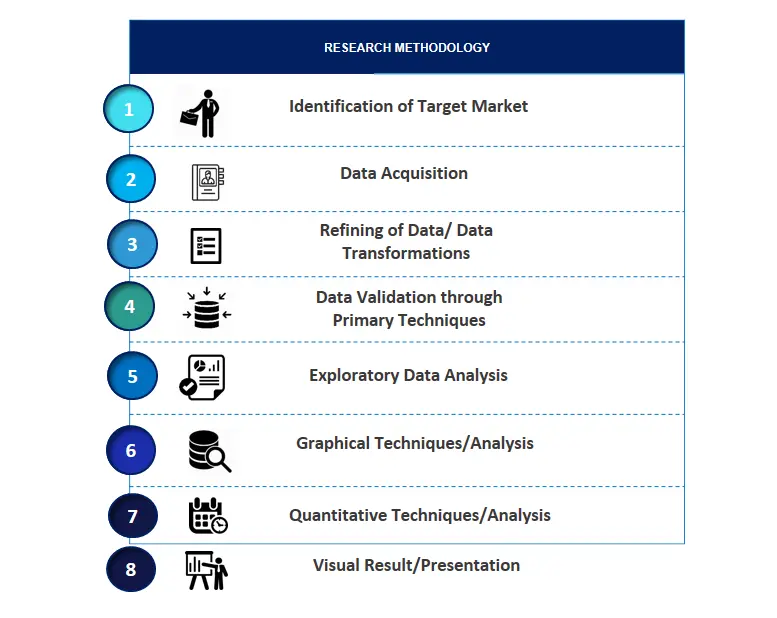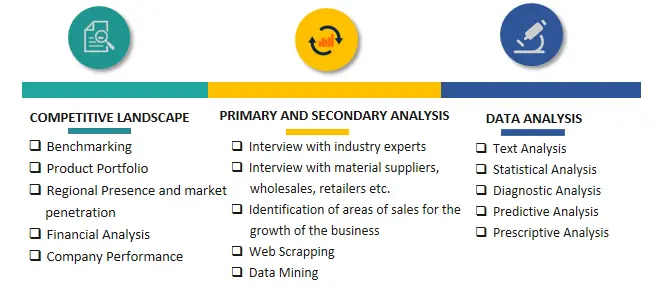
Automotive Chip Market Growth, Trends, Share, Size, Revenue, Deamnd, Challenges, Future Outlook
Automotive Chip Market Growth, Size, Trends Analysis - By Type, By Vehicle, By Application - Regional Outlook, Competitive Strategies and Segment Forecast to 2034
| Published: Jan-2025 | Report ID: AMIN2501 | Pages: 1 - 262 | Formats*: |
| Category : Automotive & Transportation | |||

- Texas Instruments Incorporated unveiled new chips designed to improve automobile intelligence and safety in January 2024. The company's recently released solution is made to guarantee effective and secure power flow control for battery management features.
- Semiconductor business, declared in March 2024 that it has started employing multiple manufacturing lines in the recently constructed Sony Device Technology (Thailand) Co., Ltd. plant in Thailand starting in February 2024. The recently constructed plant is intended to assemble image sensors for use in automobiles.

| Report Metric | Details |
| Market size available for years | 2021-2034 |
| Base year considered | 2024 |
| Forecast period | 2025-2035 |
| Segments covered | By Type, By Vehicle, By Application. |
| Regions covered | North America, Asia-Pacific, Latin America, Middle East & Africa and Europe. |
| Companies Covered | Broadcom, Infineon Technologies AG, Intel Corporation, Micron Technology, Inc., NXP Semiconductors, Qualcomm Technologies, Inc., Renesas Electronics Corporation, ROHM CO., LTD., STMicroelectronics, and Texas Instruments Incorporated and others. |
- Global Automotive Chip Market Size (FY’2021-FY’2034)
- Overview of Global Automotive Chip Market
- Segmentation of Global Automotive Chip Market By Type (Analog ICs, Microcontrollers & Microprocessors, Logic ICs)
- Segmentation of Global Automotive Chip Market By Vehicle (Passenger Vehicles, Commercial Vehicles)
- Segmentation of Global Automotive Chip Market By Application (Chassis, Powertrain, Safety, Telematics & Infotainment, Body Electronics)
- Statistical Snap of Global Automotive Chip Market
- Expansion Analysis of Global Automotive Chip Market
- Problems and Obstacles in Global Automotive Chip Market
- Competitive Landscape in the Global Automotive Chip Market
- Details on Current Investment in Global Automotive Chip Market
- Competitive Analysis of Global Automotive Chip Market
- Prominent Players in the Global Automotive Chip Market
- SWOT Analysis of Global Automotive Chip Market
- Global Automotive Chip Market Future Outlook and Projections (FY’2025-FY’2034)
- Recommendations from Analyst
1.1. Scope of the report1.2. Market segment analysis
2.1. Research data source
2.1.1. Secondary Data2.1.2. Primary Data2.1.3. SPERs internal database2.1.4. Premium insight from KOLs
2.2. Market size estimation
2.2.1. Top-down and Bottom-up approach
2.3. Data triangulation
4.1. Driver, Restraint, Opportunity and Challenges analysis
4.1.1. Drivers4.1.2. Restraints4.1.3. Opportunities4.1.4. Challenges
5.1. SWOT Analysis
5.1.1. Strengths5.1.2. Weaknesses5.1.3. Opportunities5.1.4. Threats
5.2. PESTEL Analysis
5.2.1. Political Landscape5.2.2. Economic Landscape5.2.3. Social Landscape5.2.4. Technological Landscape5.2.5. Environmental Landscape5.2.6. Legal Landscape
5.3. PORTERs Five Forces
5.3.1. Bargaining power of suppliers5.3.2. Bargaining power of buyers5.3.3. Threat of Substitute5.3.4. Threat of new entrant5.3.5. Competitive rivalry
5.4. Heat Map Analysis
6.1. Global Automotive Chip Market Manufacturing Base Distribution, Sales Area, Product Type6.2. Mergers & Acquisitions, Partnerships, Product Launch, and Collaboration in Global Automotive Chip Market
7.1. Analog ICs7.2. Microcontrollers & Microprocessors7.3. Logic ICs
8.1. Passenger Vehicles8.2. Commercial Vehicles
9.1. Chassis9.2. Powertrain9.3. Safety9.4. Telematics & Infotainment9.5. Body Electronics
10.1. Global Automotive Chip Market Size and Market Share
11.1. Asia-Pacific
11.1.1. Australia11.1.2. China11.1.3. India11.1.4. Japan11.1.5. South Korea11.1.6. Rest of Asia-Pacific
11.2. Europe
11.2.1. France11.2.2. Germany11.2.3. Italy11.2.4. Spain11.2.5. United Kingdom11.2.6. Rest of Europe
11.3. Middle East and Africa
11.3.1. Kingdom of Saudi Arabia11.3.2. United Arab Emirates11.3.3. Qatar11.3.4. South Africa11.3.5. Egypt11.3.6. Morocco11.3.7. Nigeria11.3.8. Rest of Middle-East and Africa
11.4. North America
11.4.1. Canada11.4.2. Mexico11.4.3. United States
11.5. Latin America
11.5.1. Argentina11.5.2. Brazil11.5.3. Rest of Latin America
12.1. Broadcom
12.1.1. Company details12.1.2. Financial outlook12.1.3. Product summary12.1.4. Recent developments
12.2. Infineon Technologies AG
12.2.1. Company details12.2.2. Financial outlook12.2.3. Product summary12.2.4. Recent developments
12.3. Intel Corporation
12.3.1. Company details12.3.2. Financial outlook12.3.3. Product summary12.3.4. Recent developments
12.4. Micron Technology, Inc.
12.4.1. Company details12.4.2. Financial outlook12.4.3. Product summary12.4.4. Recent developments
12.5. NXP Semiconductors
12.5.1. Company details12.5.2. Financial outlook12.5.3. Product summary12.5.4. Recent developments
12.6. Qualcomm Technologies, Inc.
12.6.1. Company details12.6.2. Financial outlook12.6.3. Product summary12.6.4. Recent developments
12.7. Renesas Electronics Corporation
12.7.1. Company details12.7.2. Financial outlook12.7.3. Product summary12.7.4. Recent developments
12.8. ROHM CO., LTD.
12.8.1. Company details12.8.2. Financial outlook12.8.3. Product summary12.8.4. Recent developments
12.9. STMicroelectronics
12.9.1. Company details12.9.2. Financial outlook12.9.3. Product summary12.9.4. Recent developments
12.10. Texas Instruments Incorporated
12.10.1. Company details12.10.2. Financial outlook12.10.3. Product summary12.10.4. Recent developments
12.11. Others
SPER Market Research’s methodology uses great emphasis on primary research to ensure that the market intelligence insights are up to date, reliable and accurate. Primary interviews are done with players involved in each phase of a supply chain to analyze the market forecasting. The secondary research method is used to help you fully understand how the future markets and the spending patterns look likes.
The report is based on in-depth qualitative and quantitative analysis of the Product Market. The quantitative analysis involves the application of various projection and sampling techniques. The qualitative analysis involves primary interviews, surveys, and vendor briefings. The data gathered as a result of these processes are validated through experts opinion. Our research methodology entails an ideal mixture of primary and secondary initiatives.



Frequently Asked Questions About This Report
PLACE AN ORDER
Year End Discount
Sample Report
Pre-Purchase Inquiry
NEED CUSTOMIZATION?
Request CustomizationCALL OR EMAIL US
100% Secure Payment






Related Reports
Our Global Clients
Our data-driven insights have influenced the strategy of 200+ reputed companies across the globe.




















